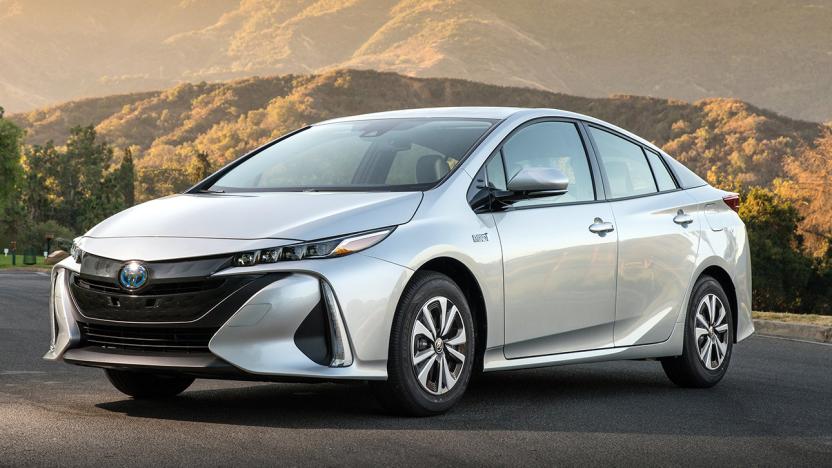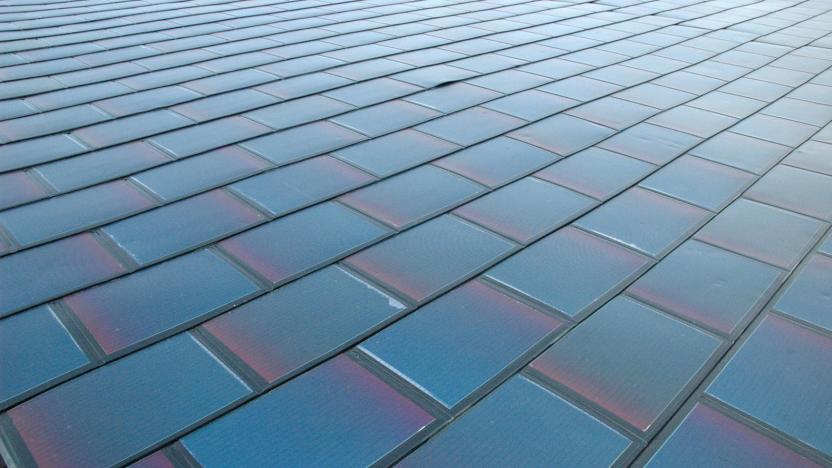inhabitat
Latest

Six innovative wind turbine designs
By Cat DiStasio The International Energy Association (IEA) announced last week that renewable energy capacity around the globe has eclipsed coal power for the first time ever. Wind power makes up a large percentage of global renewable energy, and with all the recent technological innovations in wind turbine design, it's no mystery that it's become the fastest-growing form of clean energy. With refined technology, engineers have developed new devices that are more efficient and safer for birds. Some wind turbines can even generate energy while the air is still.

Six amazing uses for the wonder material graphene
By Cat DiStasio Graphene is a super-strong, ultra-lightweight material that's led to scores of technological innovations in recent years. It consists of bonded carbon atoms formed into sheets that measure just one atom thick. The material's strength to weight ratio makes it ideal for all sorts of applications ranging from desalination filters that produce clean drinking water to batteries that charge up in seconds, and even next-gen LED bulbs. Graphene is even being used to make solar cells produce electricity in the rain, leading us to believe the most amazing graphene-based gadgets have yet to come.

Tesla's self-driving future, and more in the week that was
Tesla is making several big announcements this month, and Elon Musk just delivered the first: From now on, all new Tesla cars will be self-driving. The electric automaker also teamed up with Panasonic to build solar panels for its Powerwall home battery, which it's set to update next week. Hyperloop One is forging ahead on its futuristic transportation system by raising $50 million and hiring Uber's former CFO as an advisor. It looks like Apple has scrapped plans to build a self-driving car, and BMW showcased plans for a next-gen smart motorcycle that will never crash or tip over.

Six futuristic designs that will change public transportation
By Cat DiStasio As the world's urban centers grow, getting around them becomes increasingly difficult. In some cities, traffic is congested all day long and rush hour can last for several hours. Fortunately, there are a number of innovations in public transportation specifically aimed at alleviating those woes. While traditional buses simply add to street traffic and subways aren't feasible in all areas, engineers are looking to public transit options that can go over or around regular car traffic, making for some easier ways to get from Point A to Point B without spending hours sniffing exhaust. Elsewhere in the world, underwater floating tunnels will reduce the need for ferry rides, and a unique modular transport system could completely revolutionize long-distance travel for both people and cargo. Read on for all the details about the next generation of transportation, including some developments that will be up and running in less than five years.

The Prius Prime's efficiency, and more in the week that was
What does Tesla have up its sleeve? The automaker is planning to unveil a mysterious new product on Monday, and speculation so far ranges from the finalized Model 3 to a major Autopilot update. Meanwhile, the Toyota Prius Prime received a spectacular 133 MPGe rating, making it the most efficient electrified vehicle you can buy in the US. A new European law could require all new homes to install electric vehicle chargers. And Vello launched the world's first folding electric bike that can power itself.

Six energy-harvesting gadgets powered by people
By Cat DiStasio People power is perhaps one of the world's greatest untapped sources of renewable energy. Smart devices that harness kinetic energy from everyday human activities help the environment in more ways than one. By turning motion into useable electricity, human-powered gadgets help reduce reliance on fossil fuels and batteries that damage the planet. At the same time, kinetic gadgets encourage people to keep moving, thereby supporting a healthier lifestyle. From a dance floor that turns your sweet moves into a luminous display to a clever motion-powered light that keeps runners safe at night, we've rounded up six amazing gadgets that take advantage of human movement.

Mobile, sun-seeking gardens, and more in the week that was
The Fisker Karma was one of the world's hottest plug-in hybrid supercars when it debuted in 2011 - and now its creator Henrik Fisker has announced plans to launch an electric sports car with a 400-mile range next year. Meanwhile, Mercedes is taking aim at the Tesla Model X with its new Generation EQ SUV, which touts 400 horsepower and an all-electric driving range of 300 miles. The International Space Station is getting ready to test a brand new ion thruster that can be powered by space junk, and teenage inventor Boyan Slat has modified a C-130 Hercules aircraft with high-tech sensors to spot plastic debris in the Great Pacific Garbage Patch.

Six next-gen battery technologies
By Cat DiStasio We all love our battery-powered gadgets, but portable power cells can be devastating to the environment. Fortunately, recent developments have proven that greener batteries are coming in the not-too-distant future. Engineers are replacing toxic components with less harmful materials ranging from leaves to sugar. Other innovations on the rise look to nature to help make batteries last longer, perform better and leave less of a trace once they've been discarded. This gold nanowire-based battery, for instance, was created by accident and could make lithium ion batteries obsolete, while this single-use battery dissolves in water when its job is done, making it easier to reuse its components.

Volkswagen's long-distance EV, and more in the week that was
This week Elon Musk unveiled his long-awaited plan to establish a self-sustaining city on Mars - and he's targeting a ticket price of about $100,000 per traveler. Meanwhile, Volkswagen showcased a breakthrough electric car that will cost less and travel further than the Tesla Model 3 and the Chevy Bolt. Aerovelo shattered a world speed record by hitting 89.59 mph in a super-streamlined bicycle, and we spotted a swap-in wheel that turns any bike into an electric vehicle in 60 seconds flat.

Six wheels that give cars (and bikes) superpowers
By Cat DiStasio For a long time, business experts said, "Don't try to reinvent the wheel." Now, that's the primary objective for many engineers looking to create the vehicles of the future. And just when it seems that there are no further improvements that could possibly be made to the most basic of mechanical parts, someone finds a way to tweak it just enough to open up a world of new possibilities. Imagine having tires capable of generating electricity to top off your electric car's battery and extend your driving range. There are also a few versions of omnidirectional wheels in development, which make it possible to drive in any direction and banish parallel parking headaches forever. And our list of inventions wouldn't be complete without at least one that seems totally insane, so try this on for size: cube-shaped wheels that perform better than round ones? You have to see it to believe it.

Amsterdam's autonomous canal boats, and more in the week that was
Hydrogen-powered cars and planes are on the rise, and this week Germany announced plans to launch the world's first completely hydrogen-powered passenger train in 2017. In other transportation news, Volvo unveiled a new SuperTruck that's 70 percent more fuel-efficient than big rigs on the road today. The world's first solar-powered helicopter lifted off on its maiden flight in Maryland. And Amsterdam is getting set to launch a fleet of autonomous boats in its famed canals.

Six sun-powered ships
By Cat DiStasio The vast majority of boats rely on fossil fuels that tax the environment. Fortunately, alternative energy is on the rise in the marine world, and solar-powered ships are prepared to sail into a much cleaner future. It's been a few years since the world's largest (at the time) solar-powered ship completed its journey around the world, and a number of a fresh concepts are now awaiting construction. Giant multimillion dollar luxury yachts promise stellar sightseeing adventures with silent, solar-powered engines, while a unique vertical marine vessel will someday serve as a long-term base for deep sea research. Meanwhile, an autonomous solar-powered boat is currently making its way across the Atlantic. Read on to learn about all the wild and crazy solar-powered vessels just waiting to hit the waves.

Uber's self-driving cars, and more in the week that was
It's official: Self-driving cars are here. This week Uber's autonomous taxi fleet picked up its first passengers in Pittsburgh, while Ford announced that its self-driving car will have no steering wheel, gas pedal, or brakes. Ford is also working on cars that can harvest drinking water from thin air -- and then dispense it from a dashboard tap. In other auto news, the Chevy Bolt scored an EPA-certified driving range of 238 miles -- further than the base Tesla Model S. Tesla sued an oil exec for allegedly impersonating Elon Musk to steal trade secrets. And design studio Duffy London debuted the solar-powered super yacht of the future.

Six technologies that produce clean, safe drinking water
By Cat DiStasio One in 10 people worldwide lack regular access to safe drinking water. In an effort to tackle this most basic humanitarian problem, engineers around the globe have developed a wide array of devices, large and small, that generate clean water. Each year, a slew of innovations aim to make the process easier, cheaper and more portable, as well as produce a yield high enough to make a real impact for some of the 663 million people who suffer from water shortages. Solutions range from using condensation methods to pull water from thin air, turning salty seawater into fresh water, or distributing UV light purification chips affordable enough for people to use at home. Only a few of these technologies are working outside the lab, but the ones that do have so far generated billions of gallons of clean water.

A 3D-printed autonomous car, and more in the week that was
3D printing and autonomous cars are two of today's hottest emerging technologies -- so why not combine the two? That's the idea behind Local Motors' latest vehicle, which features a 3D-printed body, a windshield video screen and no steering wheel. Meanwhile, OX launched the world's first all-terrain flat-pack truck, which can be quickly shipped anywhere in the world. Cannae Corporation announced plans to test an "impossible" zero-exhaust microwave thruster that could revolutionize space travel. And Electra Meccanica launched SOLO, an affordable three-wheeled electric vehicle for one.

Six folding electric bikes that fit practically anywhere
By Cat DiStasio Imagine being able to carry a clean energy vehicle with you, just about wherever you go. Enter the folding electric bike. Battery-powered bicycles are on the rise as two-wheeled commuting gains popularity in places with heavy traffic and limited parking. Having the ability to fold up an e-bike and toss it in your trunk -- or even in a backpack -- expands your range of transportation options. There are a few big-name car companies like Ford and Volkswagen getting in on the action, while other innovations come from tech startups and university research groups. They all have one thing in common, though: They take a 300-year-old design for a two-wheeled vehicle and make it address modern transportation issues.

Amtrak's next-gen high-speed trains, and more in the week that was
When it comes to high-speed rail, the US lags behind many other nations - but that's set to change, as the government just gave Amtrak a $2.45 billion loan to launch a new generation of high-speed trains within the next five years. Magnetic levitation technology is often associated with trains, but one engineer came up with a wild concept for a self-driving mag-lev vehicle that doubles as a living room. In other transportation news, a technology group 3D printed a cutting-edge bicycle from scratch, and a group of Gaza students built a sun-powered car to battle the region's fuel crisis.

Six futuristic phone designs
By Cat DiStasio Cell phone technology continues moving forward year after year, but many of the developments are incremental—a better camera, more storage space, or a faster processor. Those are just the improvements that make it to the mass market, though. There's is a whole world of innovative developments in cellular phone design and technology that most people have never heard a word about, and some of them even come from leading cell phone manufacturers. Nokia, for instance, has developed a cell phone that can recharge in your pocket and other models made from largely recycled materials. Other companies are working hard to develop modular phones that are easier to repair and upgrade, thereby cutting down on electronic waste. It's impossible to know which of these futuristic technologies we'll actually be able to get our hands on, but it's fun to dream about what kind of features your cell phone might have in another five years.

Tesla's powerful new battery, and more in the week that was
Tesla makes the world's best electric cars - but they're not content to rest on their laurels. The company just launched a powerful new battery that makes the Model S the fastest production car you can actually buy. Meanwhile, autonomous vehicle startup nuTonomy has beat Uber to the punch by launching the world's first fleet of self-driving taxis in Singapore. The MIT Climate CoLab awarded honors to a new elevated Caterpillar Train that soars over traffic jams. And in Europe, Paris is planning to go completely car-free for an entire day this September, and we spotted an awesome pedal-powered school bus on the streets of the Netherlands.

Six innovative rooftop solar technologies
By Cat DiStasio It's never been easier to give your house a solar roof. Falling manufacturing costs and increasing demand have led to a number of fascinating new solar products in recent years, including roof shingles with integrated solar cells, modular solar arrays and even efficient thermal tiles made from glass. As the technology improves and more people get turned on to the benefits of renewable energy, we expect to see even more innovative products hitting the market in the coming months and years, pushing forward the envelope for solar power production.
